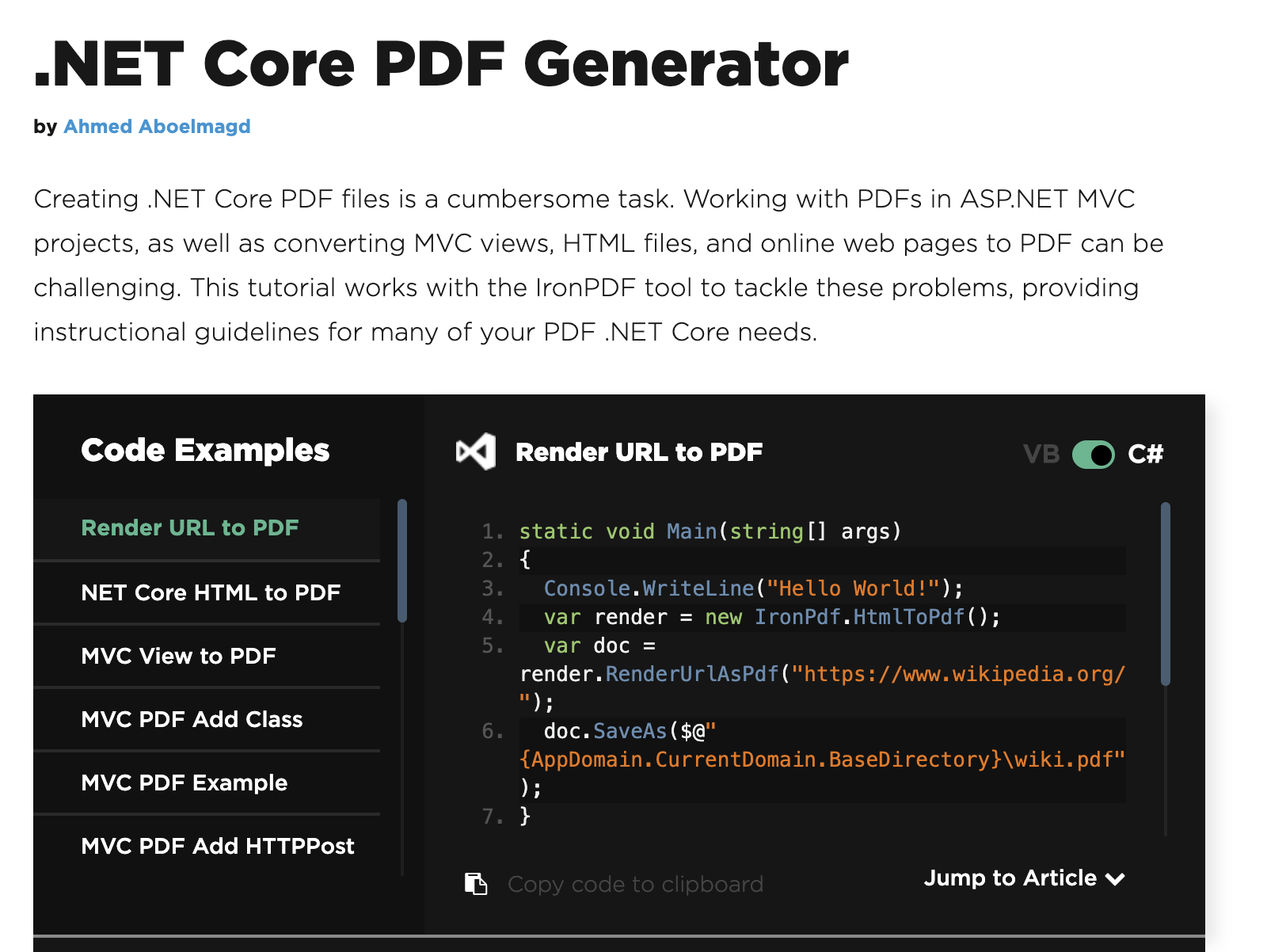It provides PDF rendering and manipulation functionality for .Net framework, as well as .Net can standard and .Net core. We currently support .Net core standard versions 2, 3, and 5. IronPDF supports all types of .Net core projects for deployment on Windows, Linux, Mac, Azure, Docker, and web cloud hosting. These include console applications, desktop applications, MVC applications, server applications, as well as web API's and all general types of web application. .Net core is the latest version of .Net. Bringing the .Net infrastructure up to speed with Java it can be deployed anywhere not just on Windows, but also on Mac, BSD, Linux, Docker and cloud infrastructure. It is deployed everywhere .Net. .Net core is an implementation of .Net for Linux, Mac, and Azure deployment. .Net standard, however, is a standard we use for component library development. It allows deployment on any platform, not just .Net core, it integrates with .Net framework, and anything written in .Net standard will work in any up to date version of .Net. IronPDF and all of its PDF functionality or .Net, standard 2.0 and above compliant. What assets do you need to convert a website to a PDF in .Net core project? You do not need any new assets to convert a PDF. Scratch that to convert HTML to PDF, in a .Net core project with IronPDF. It uses your existing assets. You point IronPDF to an HTML page or an HTML string and it will automatically load existing assets and generate PDFs. How do you convert a .Net core HTML to PDF? In .Net core, we convert HTML to PDF by using the IronPDF, HTML to PDF class and asking it to render. It will render any HTML file URL or string into a PDF document, including internal links, bookmarks, images, and so much more. What is Docker, and how would you use it in a .Net core project? Docker is a way of isolating operating systems. It is a way of creating a standalone operating system, a Windows or Linux build, which runs a single application.

